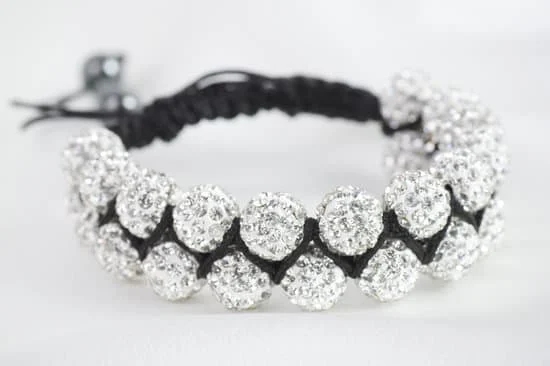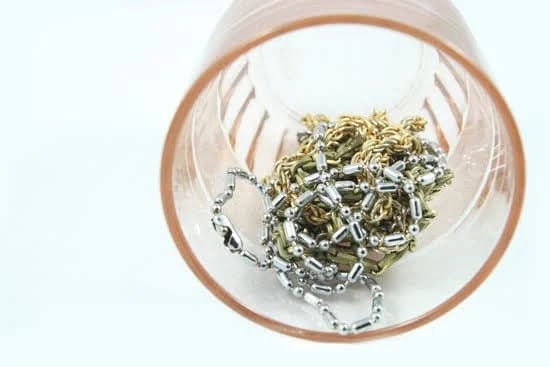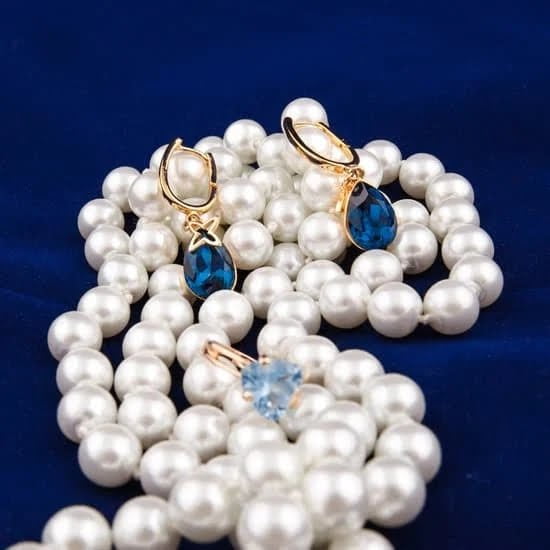Are you considering starting a handmade jewelry business or looking to improve the profitability of your existing venture? Understanding the concept of gross profit margin is crucial in ensuring the financial health and sustainability of your business. In this article, we will delve into the various aspects of gross profit margin specifically in the context of the handmade jewelry industry.
In the realm of handmade jewelry, determining an ideal gross profit margin is essential for achieving sustainable growth and success. But what exactly is an ideal gross profit margin for handmade jewelry? This question is a critical starting point for any entrepreneur in this industry. By understanding the factors that affect profit margins and how to calculate them, you can make informed decisions to ensure your business remains competitive and profitable.
Throughout this article, we will explore the fundamentals of gross profit margin, its significance within the handmade jewelry industry, and how it impacts the overall financial health of your business. From understanding the formula to setting realistic profit margins and comparing with industry standards, you will gain valuable insights into maintaining a healthy gross profit margin for your handmade jewelry business. Let’s dive into this essential aspect of financial management in the world of artisanal jewelry-making.
Understanding the Formula
The gross profit margin is a key financial metric that measures the profitability of a handmade jewelry business. It is calculated by subtracting the cost of goods sold (COGS) from the total revenue and dividing the result by the total revenue. This percentage represents the amount of money left over from sales after accounting for the cost of producing or acquiring the products.
In simple terms, the gross profit margin indicates how efficiently a handmade jewelry business is using its materials and labor to generate profit. A higher gross profit margin means that a business is able to cover its operating expenses and still have more profit leftover, while a lower margin suggests that a business may be struggling to make enough money from its sales to cover its costs.
Several factors can influence the gross profit margin in the handmade jewelry industry. These include material costs, production efficiency, pricing strategies, and competition within the market. Handmade jewelry businesses must carefully consider all these factors when calculating their ideal gross profit margin in order to remain competitive while ensuring sustainable profitability.
It’s important for handmade jewelry businesses to understand that there is no one-size-fits-all ideal gross profit margin. The benchmark varies depending on different factors such as business size, location, target market, and operating costs. Despite this variability, industry standards suggest that an ideal gross profit margin for handmade jewelry should typically range between 50% – 60%.
However, some businesses may need to aim for higher margins if they have higher operational costs or are working with higher-end materials. Achieving an ideal gross profit margin requires careful planning and strategy implementation tailored to each individual handmade jewelry business.
| Key Factor | Impact on Gross Profit Margin |
|---|---|
| Material Costs | The cost of materials directly affects COGS and overall profitability. |
| Pricing Strategies | Pricing too low can negatively impact margins while pricing too high could affect market competitiveness. |
| Competition | The level of competition in the market can influence pricing and potential sales volume. |
Factors Affecting Gross Profit Margin in the Handmade Jewelry Industry
One of the key factors affecting the gross profit margin in the handmade jewelry industry is the cost of materials and production. This includes the expenses associated with sourcing high-quality gemstones, metals, and other materials, as well as paying skilled artisans to create unique and intricate designs.
Additionally, the cost of packaging, shipping, and marketing should also be considered when calculating the overall cost of goods sold. Handmade jewelry businesses must carefully manage these costs in order to maintain a healthy gross profit margin.
Another important factor that can affect the gross profit margin for handmade jewelry is pricing strategy. Setting prices too low may attract customers, but it can also eat into the profitability of each sale. Conversely, pricing items too high may deter potential buyers and result in slow inventory turnover. Achieving a balance between competitive pricing and profitability is crucial for sustaining an ideal gross profit margin in this industry.
The market demand for handmade jewelry can also impact gross profit margins. Understanding consumer preferences, trends, and seasonal fluctuations can help businesses anticipate changes in demand and adjust their pricing and product offerings accordingly. By staying attuned to market dynamics, handmade jewelry businesses can better position themselves to optimize their gross profit margins while meeting customer needs.
Setting Realistic Profit Margins
When it comes to setting realistic profit margins for your handmade jewelry business, calculating the ideal gross profit margin is essential. The gross profit margin is a key financial metric that indicates how much money a company makes after taking into account the costs associated with producing and selling its products. For handmade jewelry businesses, determining the right gross profit margin can be challenging, as there are several factors to consider.
To calculate the ideal gross profit margin for your handmade jewelry business, you will need to use the following formula:
Gross Profit Margin = (Revenue – Cost of Goods Sold) / Revenue.
The Cost of Goods Sold (COGS) includes all the direct costs associated with producing your handmade jewelry, such as materials, labor, and manufacturing overhead. By subtracting the COGS from your total revenue and dividing by revenue, you can determine your gross profit margin as a percentage. This percentage will give you an indication of how efficiently your business is producing and selling its products.
Achieving an ideal gross profit margin for your handmade jewelry business will depend on various factors such as market demand, pricing strategy, and production costs. Generally speaking, an ideal gross profit margin for handmade jewelry businesses typically falls within the range of 50% to 70%.
However, this percentage can vary depending on individual business goals and industry benchmarks. To ensure that you are setting a realistic and achievable gross profit margin for your business, it’s important to conduct thorough market research and cost analysis.
| Factor | Ideal Range |
|---|---|
| Market Demand | High demand may support higher margins |
| Pricing Strategy | Competitive pricing vs premium pricing |
| Production Costs | Evaluating material and labor costs |
Comparing Gross Profit Margins
When it comes to determining the ideal gross profit margin for handmade jewelry, it is important to understand industry standards and benchmarks. By comparing your profit margin to these standards, you can gain valuable insights into the financial health of your business and identify areas for improvement. Here are some industry benchmarks and standards to consider:
Industry Benchmarks:
1. National Average: According to industry data, the average gross profit margin for handmade jewelry businesses typically ranges from 40% to 60%. This benchmark serves as a general guideline for what is considered a healthy profit margin in the industry.
2. Competitive Analysis: It is essential to analyze the profit margins of your competitors within the handmade jewelry market. By understanding how your competitors are performing in terms of gross profit margin, you can assess where you stand in comparison and make necessary adjustments to remain competitive.
3. Niche Markets: Different niche markets within the handmade jewelry industry may have varying profit margin standards. For example, luxury or high-end jewelry may have higher profit margin expectations compared to more affordable, mass-market jewelry.
Understanding these benchmarks and conducting regular comparative analysis will help you gauge where your business stands in terms of gross profit margin and identify opportunities for improvement.
Ultimately, what matters most is not just hitting a set percentage but ensuring that the gross profit margin aligns with your business goals, expenses, production costs, and desired level of profitability. It’s also important to keep in mind that achieving an ideal gross profit margin may require continuous monitoring and adjustment as market conditions and business circumstances change over time.
Strategies for Improving Gross Profit Margin in Your Handmade Jewelry Business
Implement Cost-Effective Manufacturing Processes
One way to improve your gross profit margin in the handmade jewelry business is to carefully evaluate and streamline your manufacturing processes. Look for ways to reduce material waste, optimize production times, and minimize labor costs. By identifying inefficiencies and implementing cost-effective solutions, you can lower your production expenses and increase your overall profitability.
Diversify Your Product Offerings
Another strategy for improving gross profit margin in your handmade jewelry business is to diversify your product offerings. Consider expanding your range of designs, materials, and price points to appeal to a wider customer base. By offering a diverse selection of products, you can maximize sales opportunities and attract different market segments, ultimately boosting your overall revenue and gross profit margin.
Optimize Pricing Strategies
Carefully evaluating and adjusting your pricing strategies can also contribute to an improved gross profit margin for your handmade jewelry business. Conduct market research to understand pricing trends, competitor pricing strategies, and customer preferences. Take into account factors such as perceived value, customer demand, and production costs when setting prices for your products. By optimizing your pricing strategies, you can ensure that you are maximizing profitability without sacrificing sales volume.
By implementing these strategies, handmade jewelry businesses can work towards achieving an ideal gross profit margin. It is important to continuously monitor key financial metrics such as cost of goods sold and sales revenue to assess the impact of these strategies on the bottom line. Balancing competitive pricing with healthy profit margins is essential for long-term success in the handmade jewelry industry.
The Importance of Maintaining a Healthy Gross Profit Margin
Maintaining a healthy gross profit margin is crucial for the success and sustainability of any handmade jewelry business. The gross profit margin represents the percentage of revenue that exceeds the costs of production, providing a clear indicator of how efficiently the business is operating.
One benefit of maintaining a healthy gross profit margin is that it ensures the business is generating enough revenue to cover its operational expenses and still have funds left over to reinvest in the business or take as profit. Additionally, a healthy gross profit margin can also increase the attractiveness of the business to potential investors, as it demonstrates strong financial management and profitability.
On the other hand, there are risks associated with not maintaining a healthy gross profit margin. A low or negative gross profit margin can indicate that the business is not pricing its products effectively or controlling its production costs. This can lead to cash flow issues, an inability to invest in growth opportunities, and ultimately threaten the viability of the handmade jewelry business.
To calculate an ideal gross profit margin for your handmade jewelry business, it’s essential to consider all production costs including materials, labor, overhead expenses, and any other costs directly associated with creating the jewelry. It’s important to factor in industry standards and benchmarks when determining your ideal gross profit margin, as this will provide context for what is considered reasonable within the handmade jewelry industry.
By setting realistic profit margins based on these factors, you can ensure long-term sustainability and profitability for your handmade jewelry business.
Case Studies
Case Study 1: Artisan Jewelry Co.
Artisan Jewelry Co. is a handmade jewelry business that has been in operation for over 10 years. The company has managed to maintain a healthy gross profit margin by focusing on high-quality materials and unique designs.
By using semi-precious stones and sterling silver, the company is able to command higher prices for its products, resulting in a gross profit margin of 60%. This is significantly higher than the industry standard, but Artisan Jewelry Co. has built a loyal customer base that values the craftsmanship and quality of their pieces.
Case Study 2: Handcrafted Gems
Handcrafted Gems specializes in hand-crafted beaded jewelry with a focus on fair trade and sustainable materials. The company has found success in maintaining an ideal gross profit margin of 50% by sourcing ethical gemstones and metals at reasonable prices. By keeping production costs low and selling directly to consumers through online platforms, Handcrafted Gems has been able to achieve a competitive gross profit margin while still offering affordable pricing to customers.
Case Study 3: Custom Creations Jewelry
Custom Creations Jewelry is known for its personalized approach to creating one-of-a-kind jewelry pieces for its customers. Despite the customized nature of their products, the company has been able to achieve a gross profit margin of 65% by carefully managing material costs and pricing strategies. By establishing themselves as a luxury brand for bespoke jewelry, Custom Creations Jewelry has been able to command premium pricing while delivering exceptional value to their clients.
These case studies demonstrate that there isn’t a one-size-fits-all approach when it comes to achieving an ideal gross profit margin for handmade jewelry businesses. Each business must analyze its unique value proposition, target market, cost structure, and pricing strategy to determine the most suitable gross profit margin for its operations.
Conclusion
In conclusion, achieving and sustaining an ideal gross profit margin in the handmade jewelry industry is crucial for the success and longevity of your business. Understanding the formula and factors affecting gross profit margin, as well as taking into account industry standards and benchmarks, is essential in setting realistic profit margins for your handmade jewelry business.
It is important to remember that a healthy gross profit margin not only ensures the financial stability of your business but also allows for investment in growth and innovation.
When determining what is an ideal gross profit margin for handmade jewelry, it’s important to consider the unique aspects of your business, such as materials costs, labor, overhead expenses, and pricing strategies. This will enable you to calculate a realistic goal that aligns with both industry standards and your specific business needs. Additionally, by continuously monitoring and analyzing your gross profit margins, you can identify opportunities for improvement and implement strategies to enhance profitability.
Overall, maintaining a healthy gross profit margin in your handmade jewelry business will provide numerous benefits, including financial stability, sustainability, flexibility to invest in growth initiatives, and overall competitiveness in the market. By learning from successful case studies and implementing proven strategies for improving gross profit margin, you can position your business for long-term success in the handmade jewelry industry.
Frequently Asked Questions
What Is the Average Profit Margin for Jewelry?
The average profit margin for jewelry can vary depending on the type of jewelry and the specific business. However, in general, jewelry retailers aim for a profit margin of around 25-35%. This allows them to cover expenses and make a reasonable profit on each sale.
What Is a Reasonable Gross Profit Margin?
A reasonable gross profit margin for jewelry businesses is typically considered to be around 50-60%. This means that the cost of the jewelry item is marked up by this percentage to determine the selling price. This allows the business to cover both direct and indirect costs while still generating a healthy profit.
What Is the Markup on Jewelry Business?
The markup on jewelry in the retail business is usually between 100-300%. This means that if a piece of jewelry costs $100 to produce or purchase, it would be sold for $200-$400. The actual markup can vary depending on factors such as brand reputation, exclusivity, and market demand.

Welcome to my jewelry blog! My name is Sarah and I am the owner of this blog.
I love making jewelry and sharing my creations with others.
So whether you’re someone who loves wearing jewelry yourself or simply enjoys learning about it, be sure to check out my blog for insightful posts on everything related to this exciting topic!





